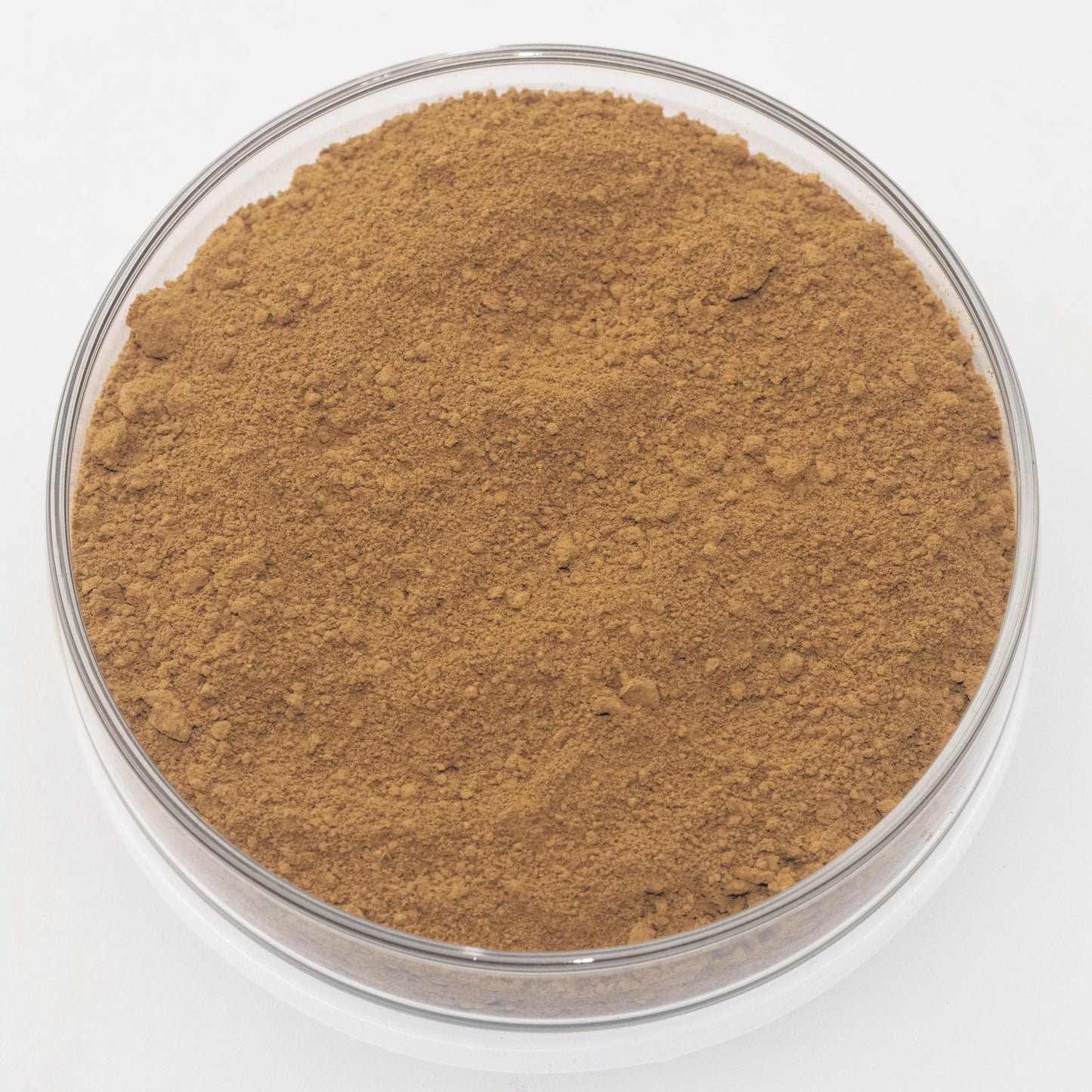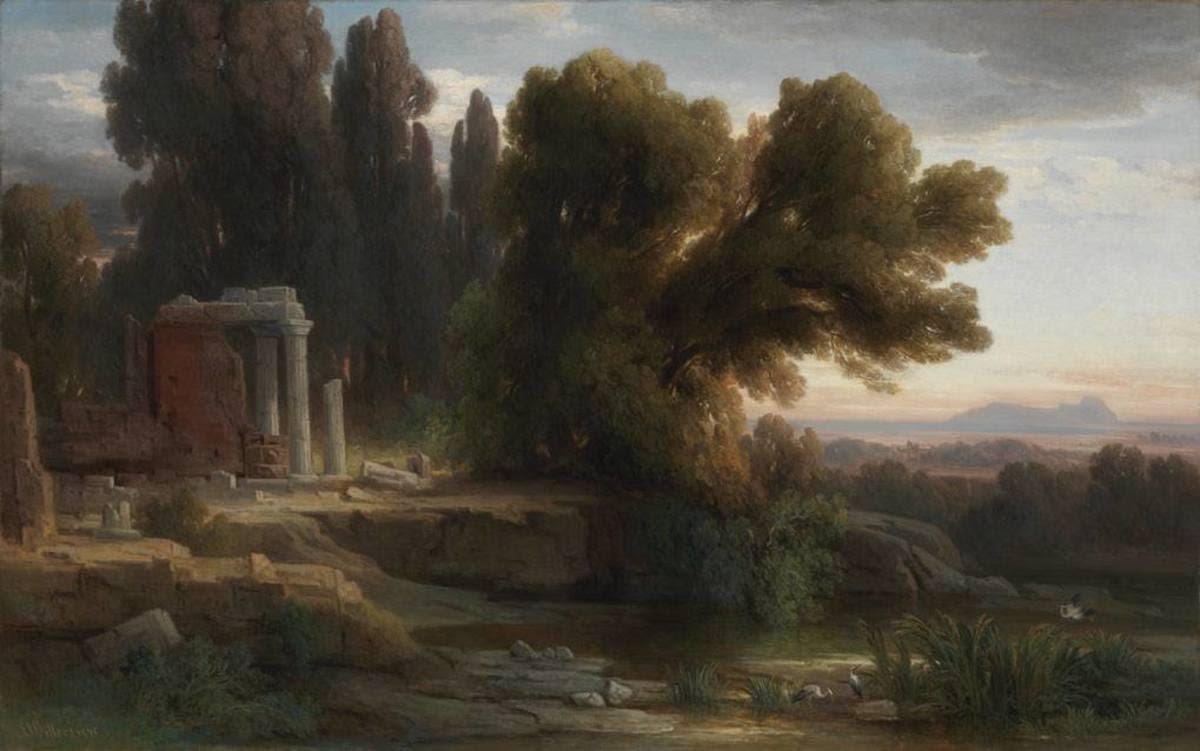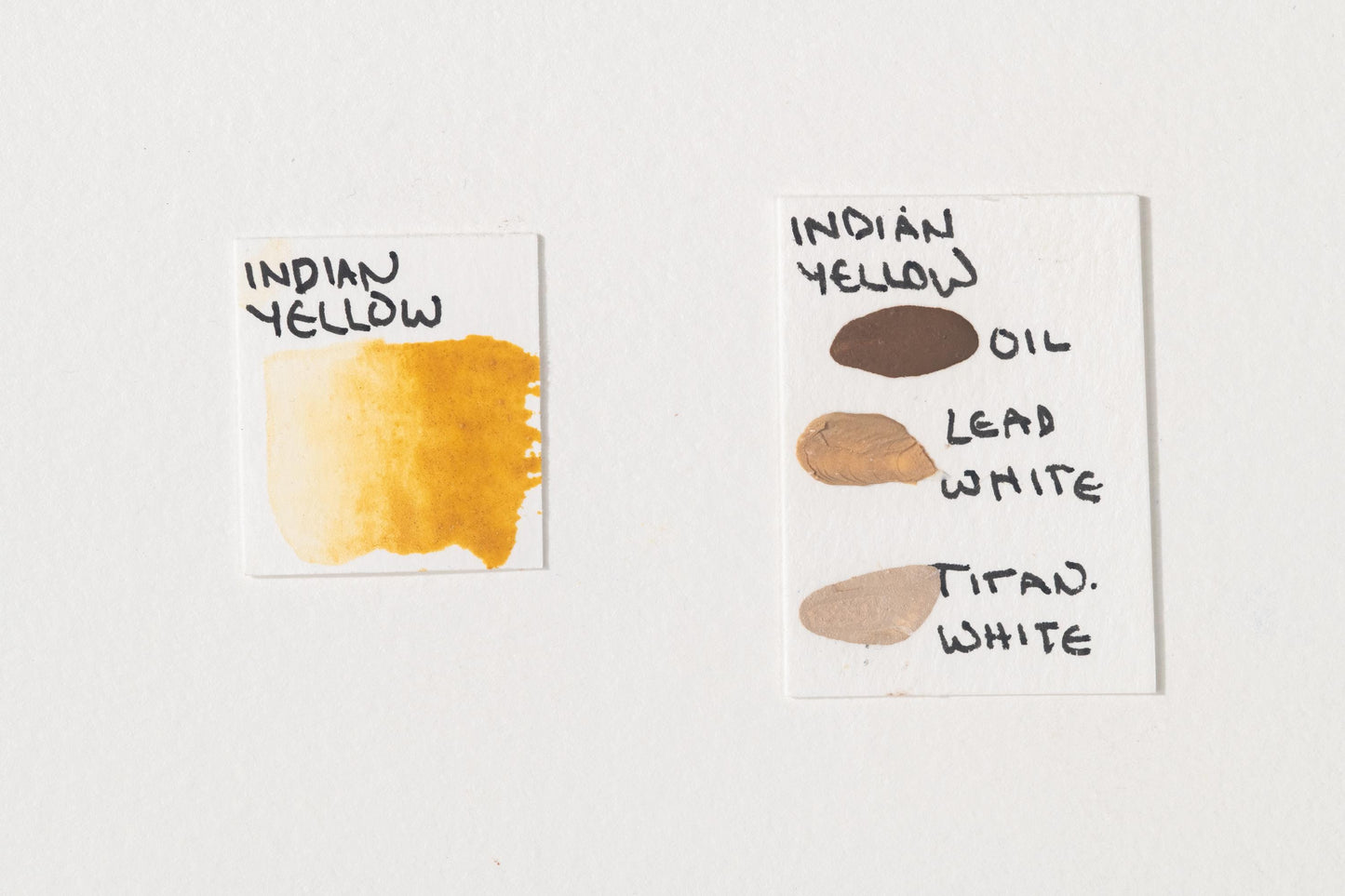Indian Yellow Earth
Indian Yellow Earth
Couldn't load pickup availability
Share



Description
Indian Yellow is a handmade single earth pigment made through a historical process of extraction, drying, and fine grinding raw yellow earth from France. This warm, deep yellow pigment is known for its rich transparency, fine texture, and ability to create glowing, luminous effects in painting. Unlike synthetic yellows, it provides a soft, natural warmth that enhances color depth and tonal variation.
Indian Yellow has exceptional lightfastness, making it highly durable for both classical and contemporary artwork. It blends seamlessly with other earth pigments, offering warm and harmonious tones in painting. Its high translucence allows for beautiful glazing and layering effects in oil, watercolor, and tempera applications. Compared to synthetic yellows, it provides a more soft and organic color, ideal for landscape, portrait, and abstract painting.
History
The original Indian Yellow is historically produced in India from the urine of cattle that were fed a strict diet of mango leaves. This difficult practice led to the pigment’s near disappearance in the early 20th century.
During antiquity and the Renaissance, artists sought alternative yellow pigments with similar warmth and luminosity as the original Indian Yellow. Natural ochre-based yellows from regions such as France and Italy became popular substitutes for the now-lost original Indian Yellow. These earth pigments were widely used in frescoes, manuscript illumination, and oil painting.
By the 18th and 19th centuries, Indian Yellow remained a highly valued pigment, and artists like J.M.W. Turner and Van Gogh used its glowing golden hue in their works. The French earth pigment version emerged as a stable and natural alternative, providing a rich, organic yellow without the ethical concerns of its original source. In the pictured artwork by German landscape artist, Ernst Willers, Grove near Ariccia in the evening light, 1873, Indian yellow is used to provide warm glow and soft greens throughout.
Today, Indian Yellow from French earth deposits continues to be prized for their unique warmth, transparency, and blending properties, making them an essential pigment for both traditional and modern painting techniques.
Health and Safety
Precautions:
Keep out of reach of children and pets.
Do not consume.
Not for cosmetic or food usage.
Do not spray apply.
For further health information contact a poison control center.
Use care when handling dry pigments and avoid dust formation.
Use particular caution with fibrous, fine, or toxic pigments.
Do not eat, drink, or smoke near dry pigments.
Avoid breathing in pigment dust and use a NIOSH-certified dust respirator with sufficient rating for dry pigment.
Wash hands immediately after use or handling.
If dust is likely, always wear protective clothing to keep out of eyes, lungs, off skin, and out of any contact as well as keep area ventilated.
This product may contain chemicals known by the State of California to cause cancer, birth defects, or reproductive harm.
Warnings and bottle information are abbreviated.
Pigment Information
Pigment Type: Natural (Iron Oxide) from minerals (Goethite - FeO(OH)) (France)
Suitable Mediums: Watercolor, Oil, Tempera, Acrylic
Lightfastness: Best
Opacity: High translucence
Other Names: French Indian Yellow, Golden Earth, Indian Yellow Substitute, Indian Yellow Earth, Indian Yellow Ochre
Color Index Code: PY43
Image: 'Hain bei Ariccia im Abendlicht' (Grove near Ariccia in the evening light) by Ernst Willers from the Schack Collection Munich



